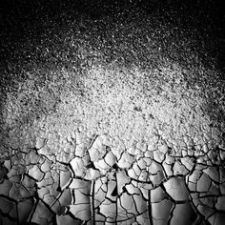Structures are made up of a combination of objects, but whether a structure is abstract or not depends on if those objects can be aligned in a grid. If the items are not visually aligned, they are abstract. But if they do align, it is considered a formal structure. Therefore, an informal structure entails not following a grid or any regularity. If there are no straight structure lines followed, then the configuration is considered informal. A gradated structure is a repeated structure, which changes in size and/or form gradually. This graduation can happen in many different ways, but two of the most common are the parallel and radiating gradations. Radiation can also be another kind of structure, however. A radiating arrangement is both formal and repetitive, and has objects that diverge from a shared middle. If an alignment can be estimated as a structure just by looking at it, it is considered a visual distribution. Invisible or Inactive structures can show the placement of the pieces in the structure, but do not affect the arrangement. The structural skeleton of an object is the space between each part of a structure, and the proportions and routes among them. (Christian Leborg – Visual Grammar)
Though Christian Leborg explains the basic vocabulary relating to the different types of form within structures, in his book “Visual Grammar,” it was interesting to read about the reasoning behind these forms in “Principles of Form and Design” by Wucius Won. Won explains the forms very similarly to the way Leborg does, but he expands with some more examples and reasoning. Won talks about the organization and relationship between objects being the foundation for different structures. Informal as oppose to formal structure is explained as being free as oppose to grid-like, but a “semi-formal” structure is also discussed. This refers to an in-between sort of composition with having either a grid or no grid, but showing some structure over none, yet not completely controlled. The comparisons that Won gives are also very informative. Visible structure explained as actual visible lines between the parts of the overall composition, made it easier to comprehend “invisible structure”, where the lines are there in our mind, just not shown on the page. The difference between conceptual lines and actual lines, also helped explain the difference between active and inactive structure. Inactive structure being where there are only conceptual lines, and active structure consisting of structural subdivision by using conceptual lines.
Here is an example of an abstract structure which consists of no grid or visible structure lines, but it still shows objects making a structure when placed together. (Manjuzaka – Etsy)
This structure adheres to a grid, and clearly has axes to which the objects within the composition all correspond to. There is equal distribution throughout. (http://www.dataisnature.com/)
Here, radiation is shown. There is a clear center in which different parts of the structure come from. It adheres to a grid, and formally spreads out from a center point. ( http://mandalland.blogspot.com/ )
The form of the objects in this structure gradually change in both size and form, clearly designating this structure as a type of gradation. (http://fiore-rosso.tumblr.com/post/27829086943/hengki-koentjoro-gradation)








